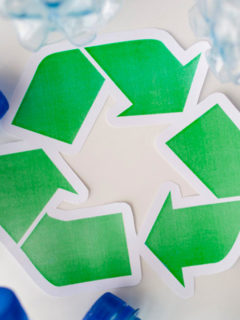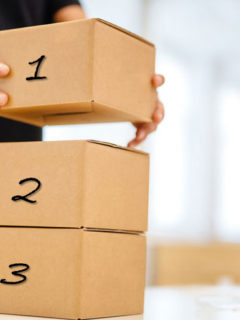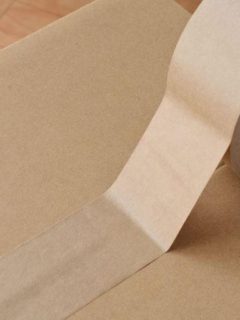Food, medicine, cosmetics, highly sensitive equipment… We buy and sell everything online. These products are often sent refrigerated to ensure quality. A challenge not to be underestimated for transporters. But have you ever considered using paper as a cooling solution? Use recyclable paper and cardboard and keep your head cool when shipping.
1. Active or passive cooling?
Si vous expédiez un même produit en grande quantité, un camion réfrigéré est probablement la meilleure solution. On appelle aussi cela le refroidissement actif : la basse température est constante et se produit à l’extérieur de l’emballage.
Si vous devez expédier une variété de produits, c’est une autre histoire. Par exemple : alors que des légumes comme les carottes et les poireaux se sentent parfaitement à l’aise à une température de +1 à +2 °C, les tomates seront mieux conservées à une température de +12 à +16 °C.
Dans ce cas, un refroidissement passif est recommandé. C’est alors l’emballage lui-même qui gardera vos produits au frais. L’avantage est que vous pouvez déterminer la température de chaque emballage séparément. Cela vous donne plus de flexibilité et cela vous revient beaucoup moins cher. Notre solution ? Utilisez du papier.
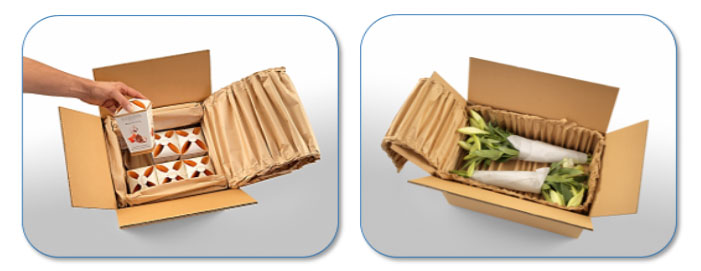
2. What are the advantages of paper?
Perhaps you would like to know why paper insulates so well? Paper pulp has an insulating effect by nature. In the construction industry, for example, paper is used as an insulator. However, the real secret lies in its shape. Paper can be folded into a sort of overlapping, corrugated cushions, as you can see in the photo above. The air between these folds then forms a temperature buffer.
Our partner Ranpak has developed a machine – the WrapPak® Protector – which makes it possible to manufacture the ideal type of paper cushions. The corrugated structure of the cushions is unique and enhances the insulating effect. We will briefly list its advantages
- Advantageous: paper is one of the cheapest packaging materials on the market
- Environmentally friendly: paper is a renewable raw material and is perfectly suited to recycling
- Space saving: paper takes up virtually no space before folding. The WrapPak® Protector is also compact, allowing it to fit into any workspace.
- Flexible: the paper can easily be folded into the desired shape without breaking or losing strength
- Protective: in the form of cushions, the paper is not only insulating, but also protects against impact and fills the gaps in a box.
- Production on demand: paper buffer pads are only produced when you need them, so there is no need to build up unnecessary stocks.
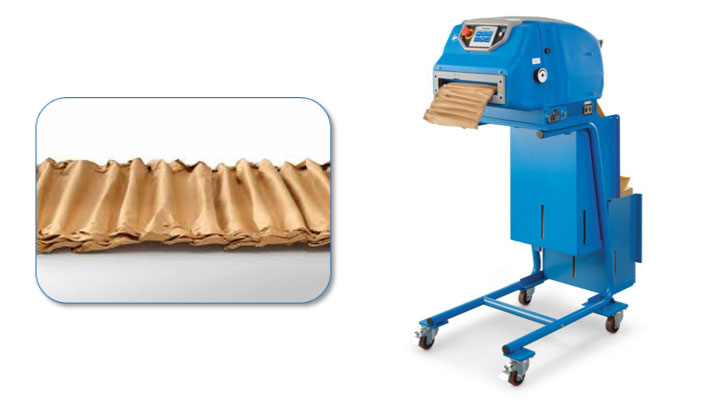
3. How to use paper as a cooling solution?
For those who want to get started themselves, we’ve put together a step-by-step plan. All you need to get started is a cardboard box and some paper cushions
- [1] Take a double or triple fluted cardboard box, these boxes have a thicker cardboard wall, making them more resistant to outside temperature variations. su_spacer]
- [2] Cover all the inner walls with paper cushions – the more layers of paper you use, the greater the insulating effect
- 1 layer: for transport at room temperature.
- 2 layers: for refrigerated products (active 24-36 hours).
- 3 layers: for frozen products and packaging (active up to 48 hours).
- [3] Place your product in the box
- [4] Add one or more cold accumulators (optional). Don’t forget to add one or more layers of cushions on top of your product.
- [5] Seal your box with adhesive tape that can withstand low temperatures , for example, gummed tape, which is also very practical as it can be recycled directly with your cardboard box.
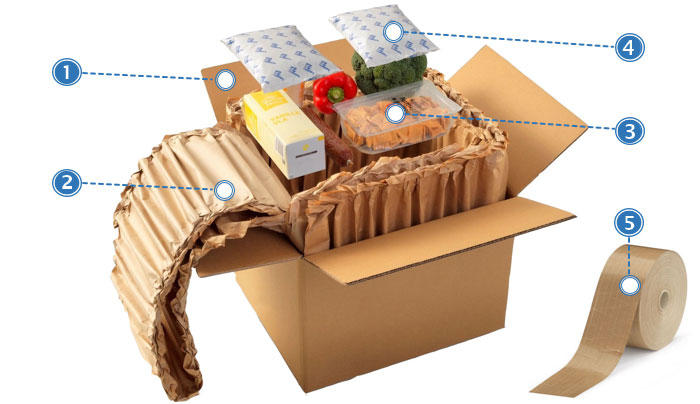
4. Paper versus other materials: test it
Le test de Ranpak ci-dessous montre l’efficacité du papier comme solution de refroidissement. Pour ce test, une barre de chocolat a été emballée dans trois caisses distinctes. Chaque caisse avait une taille de 30 x 25 x 18 cm et était équipée de deux éléments de refroidissement supplémentaires. L’emballage se trouvait dans une température ambiante de +5 °C. La barre a été emballée 3 fois dans les mêmes conditions, à une seule différence : le matériau de remplissage à l’intérieur de la caisse. On a choisi le polystyrène (jaune), le film bulle (rouge) et le papier (bleu) de la machine WrapPak® Protector.
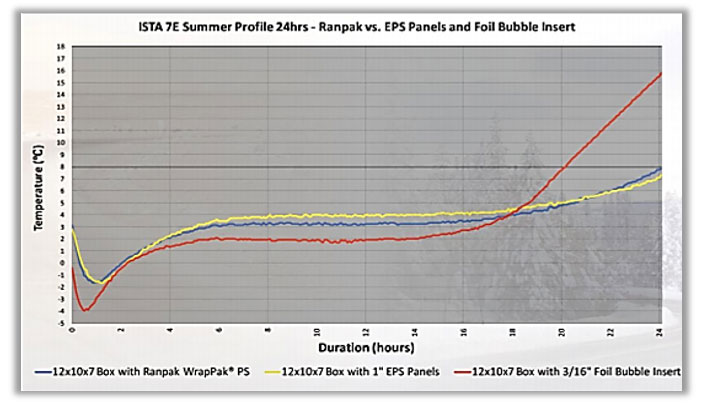
Au départ, les courbes de température sont assez similaires. Mais au bout de 18 heures, on constate que le papier bulle commence à perdre de son efficacité. 24 heures après l’emballage, la température est déjà montée à +16 °C. Le polystyrène et le papier donnent tous deux de meilleurs résultats : après 24
heu











